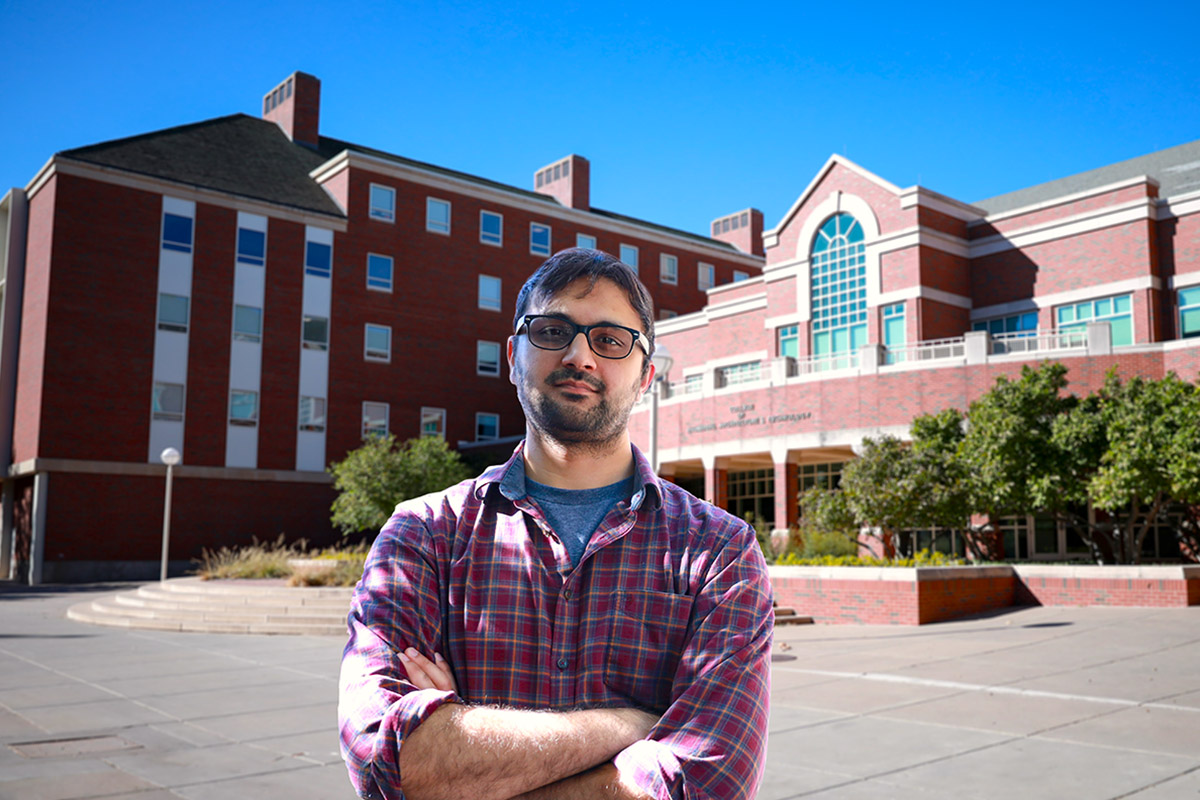Student Feature Friday with Tauseef Ismail
Friday, October 27, 2023
Meet Tauseef Ismail!
Tauseef is a second-year Ph.D. student of CIBS, set to graduate in the fall of 2026, and has dedicated himself to deepening his knowledge in the field and contributing to meaningful research. In addition to his academic pursuits, Tauseef Ismail enjoys relaxing by watching comedy series like Friends and Panchayat, an Indian web series. This pastime offers a welcome respite from the rigor of research and academic life.
Tauseef has several publications to his name, as listed below:
[1]Abbas, A., Ismail, T., Ayub, Z., Ayub, A., Cheema, T.A., Li, W. and Ye, J., 2020. Shell side single-phase experimental heat transfer analysis of a vertically oriented single segmental baffle bundle with dimpled tubes. Journal of Thermal Science and Engineering Applications, 12(1), p.011017.
[2] Abbas, A., Ayub, Z.H., Ismail, T., Ayub, A.H., Li, W., Khan, T.S. and Ribatski, G., 2021. Experimental study of ammonia flow boiling in a vertical tube bundle: Part 1–Enhanced dimple tube. International Journal of Refrigeration, 131, pp.286-299.
[3] Ayub, Z., Abbas, A., Ismail, T., Ayub, A., Li, W., Khan, T.S. and Ribatski, G., 2021. Experimental study of ammonia flow boiling in a vertical tube bundle: Part 2–Enhanced dimple tube with full length solid round PVC nonconductive rod. International Journal of Refrigeration, 131, pp.368-380.
[4] Ayub, Z., Abbas, A., Ismail, T., Ayub, A., Li, W., Khan, T.S. and Ribatski, G., 2022. Experimental study of ammonia flow boiling in a vertical tube bundle: Part 3–Enhanced dimple tube with 2/3rd height solid round PVC nonconductive rod. International Journal of Refrigeration, 134, pp.64-73.
[5] Mashhadian, A., Ismail, T., K Bach, C. and Alexander, A., 2022. A Review Of The Effects And Mitigation Of Frost With Focus On Air-Source Heat Pump Applications.
The first publication is about the development of a single-phase heat transfer correlation experimentally using a modified Wilson plot method. 2-4 as listed above can be summarized to cover assisting performance of heat exchangers and a 2-phase flow boiling of ammonia. The point of this is to lessen the environmental impact of refrigerants since ammonia has zero GWP value. The only limitation of ammonia is its toxicity. Publication 2-4 addressed this issue by reducing the charge of the refrigerant. The final publication listed above is a conference paper that studies frost accumulation and how it affects performance operation. Ismail's current research focus is on the Modeling and Simulation of Frost Growth and densification on a Finned and Tube Heat Exchanger of a heat pump and the impact of frost accumulation on the performance of the heat pump. Tauseef explained that he is calibrating the model for now. His work is coding-heavy and will remain that way for some time.
Ismail aspires to develop smart defrost controls that can be implemented cost-effectively, offering energy savings to consumers and a competitive advantage to the industry. His work holds the potential to reshape the industry's approach to frost-related challenges while holding the promise of transforming the field by making it more energy-efficient and environmentally friendly.
When he first joined CIBS, he saw new opportunities for learning and sharpening his problem-solving skill, as well as vast networking opportunities that could contribute to making a global impact with his work. In the future, after completing his Ph.D., Ismail remains open to exploring new and innovative avenues within the industry as it evolves. He is excited about the ever-changing landscape of the industry and eager to be a part of its growth and sustainable future.
Tauseef Ismail's dedication to research and innovative thinking is not only advancing the field of HVAC engineering but also holds the potential to make a significant impact on energy efficiency and environmental sustainability. As he continues his academic journey and future career, he's set to be a driving force in engineering a greener and more energy-efficient world.

